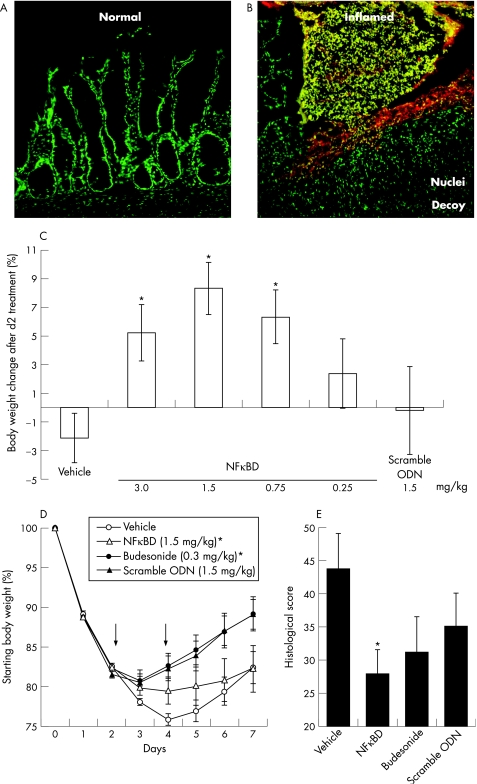Figure 2 Nuclear factor‐κB decoy (NFκBD) effectively delivered to inflamed regions of the colon is efficacious in the trinitrobenzene sulphonic acid (TNBS) model. Sytox green nuclear counterstaining overlaid with the red hexachlorofluorescein (HEX)‐labelled NFκBD indicates the absence of NFκBD in relatively normal colonic regions (A) and a concentrated localisation in inflamed lesions (B) throughout the colon. (C) Dose–response efficacy in the TNBS colitis model. Values represent mean percentage of body weight change between the day 2 end point and the first day of treatment. (D) Optimal dose of NFκBD (1.5 mg/kg) compared directly with budesonide over 7 days in the TNBS model. Values represent percentage of body weight relative to start of disease induction. Arrows indicates treatment days. Efficacy results are representative of 3–5 independent experiments totalling 30–40 animals per group. (E) Quantitative histopathological scoring of colon sections from TNBS‐induced animals (5–10 animals/group). Data are represented as mean (SEM). * Significant difference compared with saline‐treated group (p<0.05).ODN, phosphorothioated NFκBD oligonucleotide.

An official website of the United States government
Here's how you know
Official websites use .gov
A
.gov website belongs to an official
government organization in the United States.
Secure .gov websites use HTTPS
A lock (
) or https:// means you've safely
connected to the .gov website. Share sensitive
information only on official, secure websites.
